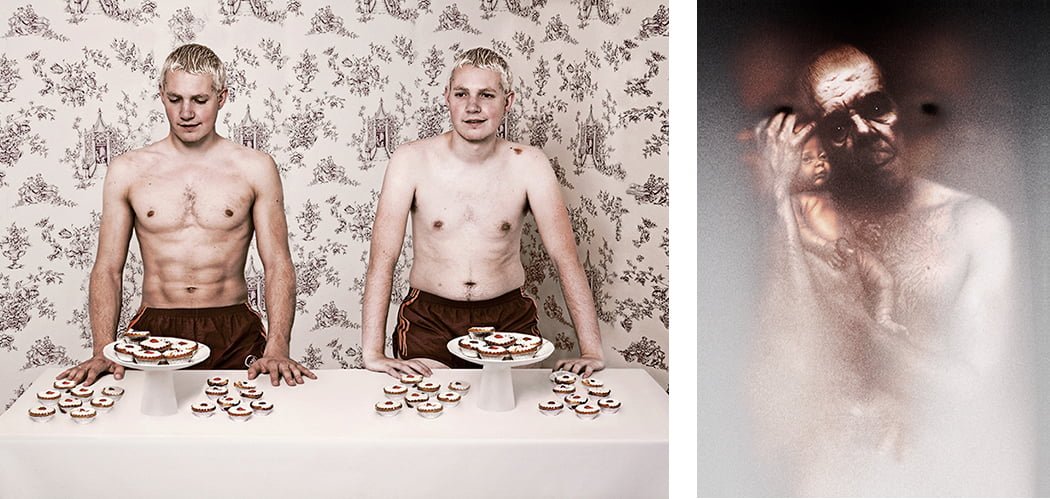DIVIDED (2005)
Gallery Hippolyte / Helsinki
The Right Way to Be, video
Divided (The Everyday), photographs
Divided (The Dreaming), photographs
Diary drawings, pencil
DOUBLE WHITE SINGLE MAN
The photographic artist Tero Puha’s exhibition continues the discussion about male identity, a discussion that for some unknown reason seems to have gained a firm foothold among male photographers. Perhaps male photographers find it easier to use their medium to contemplate the problem than ordinary men do. The problems are, nevertheless, presumably the same as those of ordinary people, as Puha defines them in a few short words: “How are we to live? “
The core of the exhibition is an installation made up of drawings and videoworks, in which a man practises everyday situations in front of a video camera. The videowork brings to mind the old Finnish film in which a thirty-year-old male character practises a situation in which he wants to make an impression on a woman by kneeling and presenting her his business card.
The final section of the set of images in the exhibition is in fact like something from an old Soviet science-fiction film. Hunky young men, who are as white as alabaster. The twin brothers on the invitation at first appear to be identical twins, but when we see the exhibition’s other pictures, we begin to suspect that they are in fact clones.
In these images Puha does indeed subtly develop the idea from twins to clones, and on to the various artificial, non-organic methods by which people are now created, at least on a fictive level. It is only a matter of time before they become commonplace. For now, however, the problems of duplicating people take us back to Puha’s video installation and to a variant on Shakespeare: To be or not to be, and how. ANNE ROUHIANEN / HELSINGIN SANOMAT 4.12.2005
TRACKING IDENTITY
Tero Puha’s “electronic paintings” create a fierce picture of the body. It’s not always easy to watch. In his exhibition, Tero Puha continues to explore identity formation mainly through corporeality, as he has done in his earlier works. This time the techniques are digitally processed photograph, video and drawings. The latter techniques bring out the scale of emotion more strongly than is usually seen from Puha. They are also very intimate.
The Everyday series of photographs show a variety of male bodies in which a trimmed body and a slimmer body are assimilated to identical faces. The Day One: Bakewell Tarts picture is still “within reason”, but The Day After: Loser´s Part is already in the overbuilt and overweight phase. Tero Puha seems to be asking what we want to be and under what conditions, and where our imaginary boundaries are.
In the video The Right Way to Be, Puha recites and plays a variety of lyrics and scenes like “I love you” or “Goodbye”. Emotional scales and ways of expressing themselves vary, and the artist seems to practice different situations and possible emotional expressions. The primitive drawings in the series illustrate strong emotions, disappointments or hopes. The photos in The Dreaming series are partly pretty frenzied. In them, the deformation of the human body, the partitioning of the body or the instrumental use of it all have very strong visual expressions. In these pictures, too, emotions seem to play a significant part, but they also cause the viewer to withdraw objectively and reject possible feelings.
As a whole, Puha’s exhibition is very intense and powerful. It is hung up with open-minded bundling. It´s not offering too obvious answers to the viewer, and many thread ends have to be spun back, making the viewer return to the previous series or wall. MIKKO ORANEN / HAM – HELSINKI ART MUSEUM




